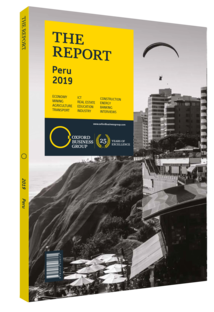Édgar Vásquez Vela, Minister of Foreign Trade and Tourism: Interview

Interview: Édgar Vásquez Vela
How would the opening up of new export markets help the agri-business segment?
ÉDGAR VÁSQUEZ VELA: Peru has negotiated several free trade agreements that have created opportunities for our non-traditional exports, resulting in their participation in total export figures growing steadily over the past years. Regarding the agriculture sector, Peru is a diverse country with a wide and attractive exportable offering, and we seek to ensure preferential access to products such as grapes, avocados, pomegranates, blueberries and quinoa, among others. Many of these are recognised for their high nutritional value and are generally labelled under the collective “superfoods” brand. While our efforts have been directed at ensuring preferential access to our main trading partners, there is still significant potential to ship our non-traditional exports to Asian markets. We are confident that once the Comprehensive and Progressive Agreement for Trans-Pacific Partnership enters into force, it will generate innumerable opportunities for Peruvian exports related to agriculture and other sectors. We are also currently negotiating with India to try reduce tariffs, particularly those that are applied to agricultural exports. In 2018, of the total $22bn exported to Asia, only 2.8%, or $620m, corresponded to agricultural products. Asian countries accounted for 9% of Peruvian agricultural exports, which totalled $6.6bn in 2018. This shows us that there is potential to increase Peruvian agricultural exports to Asian countries; however, it will require a commercial effort to introduce the products that we already sell successfully to the US and Europe, while at the same time considering which products Asian countries consume the most.
How has agri-business evolved over the last decade, and what drove this transformation?
VÁSQUEZ: Between 2000 and 2018 Peruvian agricultural exports increased 10-fold to $6.6bn, growing at twice the rate of global exports and 1.6 times the rate of regional exports. Agriculture now represents 14% of the country’s total export basket. Though still behind countries such as Brazil, Mexico and Argentina, where figures are as high as $30bn per year, Peru has nevertheless become a medium-sized player in the market and is quickly approaching the levels reached by more mature exporters such as Chile and Colombia.
Peru has significantly diversified its agro-industrial exports offering, migrating from cotton, sugar and wool to various fruits and vegetables. The country is a key global exporter of coffee and is also the world’s largest exporter of asparagus and quinoa. It is ranked second globally in avocado and blueberry exports, third in fresh mangoes and grapes, fourth in preserved palmettos, and fifth in preserved olives.
The growth of agro-exports in Peru is mainly due to private sector investment in the diversification of products and the development of production, strengthened by a solid level of cooperation among the main players in the sector. This is in addition to the contribution of the public sector in the development of communication and irrigation infrastructure, and to the signing of commercial agreements and health protocols with major economies around the world.
Where do you see Peru’s potential in the fast-moving consumer goods global value chain?
VÁSQUEZ: Currently, the value of Peru’s agro-export industry is derived from the health benefits provided by our agricultural products, and the industry’s strict compliance with international standards of quality. We believe that there are great opportunities for Peruvian value-added agro-exports to be included in the global value chain, either as final goods or as an intermediate product prior to the final phase of production. Beyond our main agro-exports of fresh fruits and vegetables, we also export coffee, cocoa and quinoa – which require a low level of processing – and oils, juices and preserves – which require a high level of processing.
You have reached the limit of premium articles you can view for free.
Choose from the options below to purchase print or digital editions of our Reports. You can also purchase a website subscription giving you unlimited access to all of our Reports online for 12 months.
If you have already purchased this Report or have a website subscription, please login to continue.

